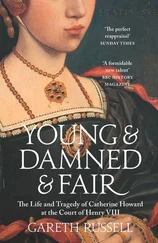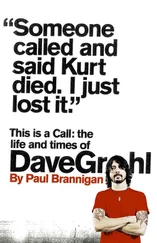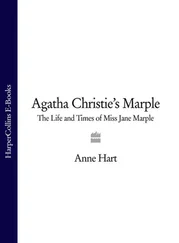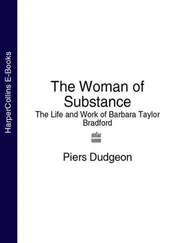The rest of the promised article, infuriatingly, had not been pasted into the book. Time and again I read this clipping, extravagant in its claims even by the journalistic standards of the day, and a small LA riot of excitement began building somewhere in the back of my mind. Then my electronic pager sounded, bringing me hurtling back to the present with the news that a verdict in the Rodney King trial was imminent. By the next afternoon, two of the cops had been found guilty, the inhabitants of South Central Los Angeles had obligingly decided not to go on the rampage, and I was back in Van Nuys, combing the Pinkerton archive for every scrap of material I could find on Adam Worth. The detectives, I soon learned, had hunted Worth across the world for decades with dogged perseverance, and the result was a wealth of documentation: six complete chronological folders, tied together with string and bulging with photographs, letters, more newspaper articles and hundreds of memos by the Pinkerton detectives, each one written in meticulous copper-plate and relating a tale even more intriguing and peculiar than the nameless Sunday Oregonian writer had implied.
For Adam Worth, it transpired, was far more than simply a talented crook. A professional charlatan, he was that most feared of Victorian bogeymen: the double-man, the charming rascal, the respectable and civilized Dr Jekyll by day whose villainy emerged only under cover of night. Worth made a myth of his own life, building a thick smokescreen of wealth and possessions to cover a multitude of crimes that had started with picking pockets and desertion and later expanded to include safe-cracking on an industrial scale, international forgery, jewel theft and highway robbery. The Worth dossiers revealed a vivid rogues’ gallery of crooks, aristocrats, con men, molls, mobsters and policemen, all revolving around this singular man. In minute detail, the detectives described his criminal network, radiating out of Paris and London and stretching from Jamaica to South Africa, from America to Turkey.
I left the Pinkerton archive elated but tantalized. The material was vast but incomplete. Like any sensible crook anxious to avoid detection, Worth had not written his memoirs and had left behind only a handful of coded letters. My initial researches had raised more questions than they answered. How had Worth evolved his contradictory moral code? How had he escaped capture for so many years? How had he transformed himself from a penniless German-Jewish emigrant from Cambridge, Massachusetts, into an English milord in the aristocratic heart of London?
One mystery intrigued me more than all the others. In the early summer of 1876, at the height of his criminal powers, Worth stole from a London art gallery in the dead of night The Duchess of Devonshire, Thomas Gainsborough’s famous portrait and then the most expensive painting ever sold. What had possessed him? And why, still more bizarrely, had he kept the great painting, in secret, for the next twenty-five years? The Gainsborough portrait, I was already certain, held the key to unlocking the secret of Adam Worth.
California proved to be only the first stop on a long trail. Slowly I assembled a fuller picture, from letters, diaries, published memoirs by other criminals, newspaper accounts and the archives of Scotland Yard, the Paris Sûreté, Agnew’s art gallery and Chatsworth House. Other, quite unexpected discoveries, soon followed.
Worth invented his own life as a dramatic romance. But when the Sunday Oregonian talked of his piquant history as the very stuff of fiction, the newspaper was telling the literal truth. The English detective Sherlock Holmes was already a household name when Sir Arthur Conan Doyle first learned of Worth’s villainous deeds. The great English writer, it turns out, had used Worth as the model for none other than Professor Moriarty, Holmes’s evil, art-collecting adversary and one of the most memorable criminals in literature. Conan Doyle was not alone in his debt to Worth, for writers as diverse as Henry James and Rosamund De Zeer Marshall, an author of wartime bodice-rippers, also found inspiration in Worth’s activities.
My quarry led me on some unlikely pilgrimages: to the grand building in Piccadilly near Fortnum & Mason’s that was Worth’s criminal headquarters; to the Civil War battlefield where he first reinvented himself; to the London art gallery where he stole his most prized possession and to a room in Sotheby’s auction house where, for the first time, I encountered that indelible image face to face. As I write, from the Paris office of The Times, I can look across the Place de l’Opéra to the Grand Hotel, where Worth ran an illegal casino and held court with his mistress in the 1870s. I am still not sure whether I have been following Worth for the last four years, or whether he has been shadowing me.
I had set off to hunt down ‘The Greatest Thief of Modern Times’. What I found turned out to be an unlikely reflection of those times, and our own: a Victorian gentleman and master thief who merged the highest moral principles with the lowest criminal cunning. What follows is a story that has never been told before; it is a story of dual personalities, double standards and heroic hypocrisy.
This is the story of Adam Worth.
Paris
March, 1997
‘Adam Worth was the Napoleonof the criminal world. None other could hold a candle to him.’
SIR ROBERT ANDERSON, Head of Criminal Investigation, Scotland Yard, 1907
‘He is the Napoleon of crime, Watson. He is the organizer of half that is evil and of nearly all that is undetected in this great city. He is a genius, a philosopher, an abstract thinker. He has a brain of the first order. He sits motionless, like a spider at the centre of its web, but that web has a thousand radiations, and he knows well every quiver of each of them. He does little himself. He only plans. But his agents are numerous and splendidly organized … the central power which uses the agent is never caught—never so much as suspected.’
SHERLOCK HOLMES on Professor Moriarty in ‘The Final Problem’ by Sir Arthur Conan Doyle
‘I hope you have not beenleading a double life, pretending to be wicked and being really good all the time. That would be hypocrisy.’
OSCAR WILDE, The Importance of Being Earnest
£1000
R E W A R D.
STOLEN
Between half-past nine p.m. 25th, and 7 a.m. 26th inst, from the Picture Gallery, No. 39b, Old Bond Street, the celebrated Oil Painting, by Gainsborough, of the Duchess of Devonshire, Size 60 inches by 45 inches, without frame or stretcher.
The above Reward will be paid by Messrs. Agnew and Sons, No. 39b, Old Bond Street, to any person giving such information as will lead to the apprehension and conviction of the thief or thieves, and recovery of the painting.
Information to Superintendent Williamson, Detective Department, Great Scotland Yard, London, S.W.

ON A MISTY MAY MIDNIGHT in the year 1876, three men emerged from a fashionable address in Piccadilly with top hats on their heads, money in their pockets and burglary, on a grand scale, on their minds. At a deliberate pace the trio headed along the empty thoroughfare and at the point where Piccadilly intersects with Old Bond Street, they came to a stop. Famed for its art galleries and antiques shops, Old Bond Street by day was choked with the carriages of the wealthy, the well-bred and the culturally well-informed. Now it was quite deserted.
Читать дальше













